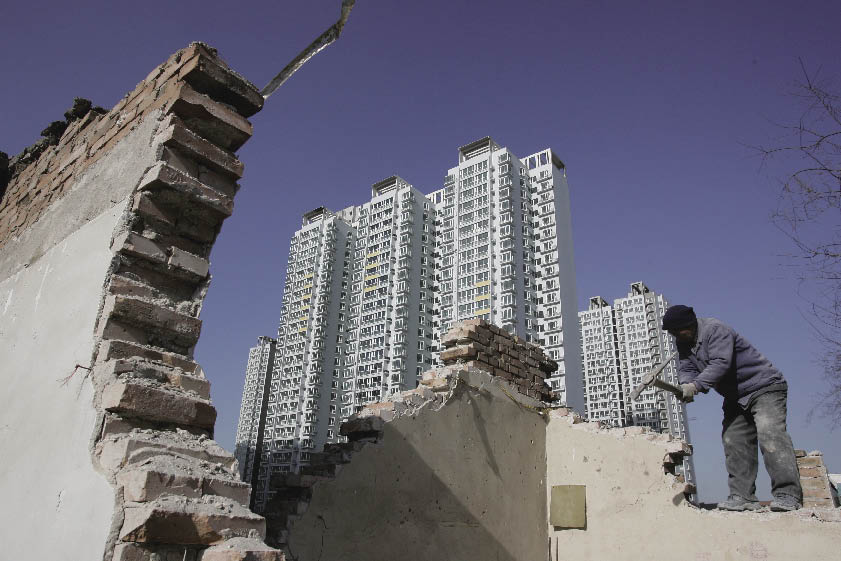| Down by Law
By MA WEN
INVOCATION of housing demolition permits has led to increasingly shocking scenes of citizen protest in China. Tang Fuzhen, a resident of Chengdu City, Sichuan Province, burned herself to death on the roof of her house while resisting imminent demolition of her home by local government law-enforcement. That desperate act took place not long after a real estate developer in Guiyang, Guizhou Province organized dozens of thugs to break into houses designated for demolition. They strong-armed 13 sleeping inhabitants out of their houses, threw them into a minibus, carted them away, and abandoned them elsewhere. In another case in Shanghai, Pan Rong, owner of a house slated for the wrecker's ball, stood on her rooftop brandishing a homemade incendiary and confronting a demolition team organized by local authorities.
 |
|
The price of progress: This demolition site in Taiyuan, Shanxi Province could be found anywhere in China. |
Facing violent incidents involving urban housing demolition, and noting they had occurred repeatedly in recent years, five professors from the Peking University Law School met to discuss the situation in early December 2009. Shen Kui, Wang Xixin, Chen Duanhong, Qian Mingxing and Jiang Ming'an soon submitted an appeal to the Standing Committee of the National People's Congress, asking for a reexamination of the Administrative Regulations on the Demolition of Urban Housing. They suggest that the legislature annul or revise this State Council statute.
Within a week, the State Council responded by inviting the five professors to join a panel discussing the draft of a new statute – the Regulations on the Expropriation, Demolition and Relocation Compensation of Houses Built on the State-owned Land. This was a heads-up that the current statute on urban housing demolition would be annulled.
Legal Vacuum
In fact, appeals to revise the current statute on urban housing demolition have been in progress for many years. Whenever a demolition incident occurred accompanied by violent incidents, public opinion reproached this statute. The intent of the government to revise it was revealed in 2007, following the promulgation of the Property Law.
China's system of urban housing demolition started in the 1990s. In 1991, the State Council enacted an administrative statute to regulate the process of repossession, demolition and relocation. In 1994, urban housing reform started, and in the same year the Law on Urban Real Estate Administration came into effect, a prelude to the marketization of urban construction and the real estate industry. Real estate developers became the main drivers of urban and rural construction. In the same year, China began to carry out reform of tax distribution, and in turn, local governments began to rely on incomes from selling land-use rights. In 2001, the Executive Meeting of the State Council adopted revisions to the administrative statute on urban housing demolition, and the statute was formally enacted on July 1 of the same year.
The revised statute does not differentiate housing demolition in the public interest from that for commercial purposes. Hence, the operational mode was: the investor made an application to the government for housing demolition and relocation, then, after approval from the government, carried out demolition. When disputes occured, the government acted as adjudicator. If the owner of the house designated to be demolished refused to be relocated, coercive measures were taken to implement the demolition. The local governments acted as both ratifier and arbitrator, virtually always supporting the developers in their coercive behaviors.
|
